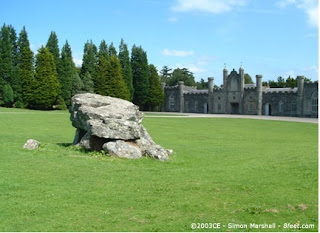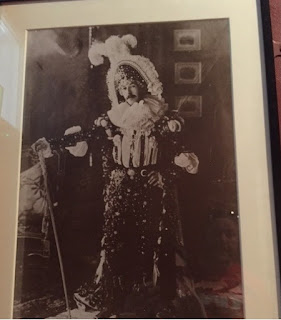If I ever finish this Scone Odyssey, I expect the National Trust will want to reward me by giving me one of their many stately homes.
I will need at least a week to mull it over when the time comes, but Waddesdon Manor near Aylesbury will surely be a contender. It's one of the most impressive buildings in the country:
And although it has a lot of rooms, some of them are very cosy and homely. Having said that, some of the not so homely ones are great too - I particularly love the Miss Havisham-style dining room:
We went back to Waddesdon today, because for the first time in three years I generously allowed the Scone Sidekick to pick our destination. I have around 130 NT properties still to visit and I am getting increasingly worried that I'll never finish. So I was hoping he'd say Chedworth Roman Villa or Hidcote but he didn't. He absolutely loved Waddesdon on our first visit so that's where he wanted to go.
And it was great to see it all again. I won't repeat all the history, as you can find that on my original post, but I noticed other items that I hadn't seen before. This is a portrait of Ferdinand de Rothschild for example - apparently it's the only one:
We also spent more time in the gardens - I'm afraid gardens always get short shrift from us on our visits. I always tell myself, a la Arnold Schwarzenegger, that I'll be baaaaack but I should really make more effort while I'm there.
As you would expect, the Waddesdon gardens are very neat and orderly:
I was also pleased to see that someone had been making good use of the contents of our recycling box to create this bottle sculpture:
But onto the scones. Scones don't get marks on revisits - like any decent quizmaster, I can only accept your first answer - but the Waddesdon scone was OK this time. On our first visit it got a unanimous five out of five; today it probably got a four. It was nice - it just wasn't as nice.
I'll finish with a nice picture of the Scone Sidekick. It'll be three years before he gets to pick another property to visit, poor love.
I will need at least a week to mull it over when the time comes, but Waddesdon Manor near Aylesbury will surely be a contender. It's one of the most impressive buildings in the country:
And although it has a lot of rooms, some of them are very cosy and homely. Having said that, some of the not so homely ones are great too - I particularly love the Miss Havisham-style dining room:
We went back to Waddesdon today, because for the first time in three years I generously allowed the Scone Sidekick to pick our destination. I have around 130 NT properties still to visit and I am getting increasingly worried that I'll never finish. So I was hoping he'd say Chedworth Roman Villa or Hidcote but he didn't. He absolutely loved Waddesdon on our first visit so that's where he wanted to go.
And it was great to see it all again. I won't repeat all the history, as you can find that on my original post, but I noticed other items that I hadn't seen before. This is a portrait of Ferdinand de Rothschild for example - apparently it's the only one:
We also spent more time in the gardens - I'm afraid gardens always get short shrift from us on our visits. I always tell myself, a la Arnold Schwarzenegger, that I'll be baaaaack but I should really make more effort while I'm there.
As you would expect, the Waddesdon gardens are very neat and orderly:
I was also pleased to see that someone had been making good use of the contents of our recycling box to create this bottle sculpture:
But onto the scones. Scones don't get marks on revisits - like any decent quizmaster, I can only accept your first answer - but the Waddesdon scone was OK this time. On our first visit it got a unanimous five out of five; today it probably got a four. It was nice - it just wasn't as nice.
I'll finish with a nice picture of the Scone Sidekick. It'll be three years before he gets to pick another property to visit, poor love.































